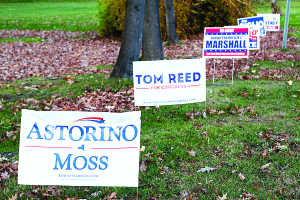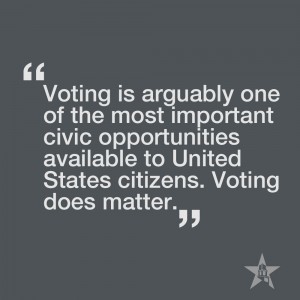On Tuesday Nov. 4, millions of Americans turned out to vote in the Federal midterm as well as local and state elections. Dominating the mindset of a majority of the voter-base was disappointment in the last two years under the Democratic Party’s majority in the Senate and dismally low approval ratings for President Obama.
 As a result of these ongoing themes, The Republican Party saw a sweeping set of victories in both houses of the United States Congress, as well as in the state governor setting. Already having a majority, the Republicans gained 14 seats in the House of Representatives – most significantly, ousting three incumbent officials in New York State as well as in Texas, Florida, Iowa, West Virginia, Georgia and North Carolina (among others). John Boehner, of Ohio’s 8th Congressional District, continues his tenure as Speaker of the House and third in line to the Presidency. The current house demographics stand at 243 (R) to 178 (D) with 14 districts undecided (as of Wednesday) due to close calls, run-off elections, or inconclusive results.
As a result of these ongoing themes, The Republican Party saw a sweeping set of victories in both houses of the United States Congress, as well as in the state governor setting. Already having a majority, the Republicans gained 14 seats in the House of Representatives – most significantly, ousting three incumbent officials in New York State as well as in Texas, Florida, Iowa, West Virginia, Georgia and North Carolina (among others). John Boehner, of Ohio’s 8th Congressional District, continues his tenure as Speaker of the House and third in line to the Presidency. The current house demographics stand at 243 (R) to 178 (D) with 14 districts undecided (as of Wednesday) due to close calls, run-off elections, or inconclusive results.
The Republicans also managed to pull off a 7-seat gain in the Senate – putting them in the majority for at least the next two years. The incoming Republicans successfully defeated long time Democrat strongholds in Colorado, Arkansas, and North Carolina defeating ex-Senators Mark Udall, Mark Pryor, and Kay Hagan respectively. In addition, the Republicans picked up Montana, Iowa, South Dakota, and West Virginia – and by the end of the week it is predicted Alaska will also be picked up by Republicans.
Senator Harry Reid, a Democrat from Nevada ends a seven year stint as Majority Leader and will pass off his position of control to the Republican’s Mitch McConnell from Kentucky. The current results from Tuesday’s turnout place the Democrats with 45 and the Republicans with 52. Though the races in Alaska, Virginia, and Louisiana have not been decisively announced (as of Wednesday), no possible outcome would change the final count.
Andrew Cuomo was re-elected to as the Governor of New York State, defeating Republican adversary Rob Astorino. However, the Democrat-laden New York State legislature did see some change with the Senate being overtaken by a Republican majority. New York City’s Mayor Bill de Blasio teamed up with long-standing U.S. Senator Chuck Schumer and Governor Cuomo in an attempt to rally Democratic voters to a victory in the Senate. Despite their efforts, key districts in Long Island and upstate New York swung sharply to the left, increasing the Republicans margin of control.
For Houghton, the reelection of longtime representatives Assemblyman Joseph Giglio, Senator Catherine Young, and U.S. Representative, Thomas Reed, comes as no surprise. A highly Republican region, all three were incumbents and faced little real challenge in getting re-elected (Giglio and Young ran unopposed). Reed faced Martha Roberts from Ithaca, but defeated her.
Though most may consider midterm elections unimportant in comparison with Presidential elections, this weeks results and incoming politicians will determine many of the issues that will be hot topics during the 2016 presidential election. Time will tell if Hillary Clinton, Elizabeth Warren or another Democratic presidential candidate has been handily equipped with a Congress they will need to get elected.



